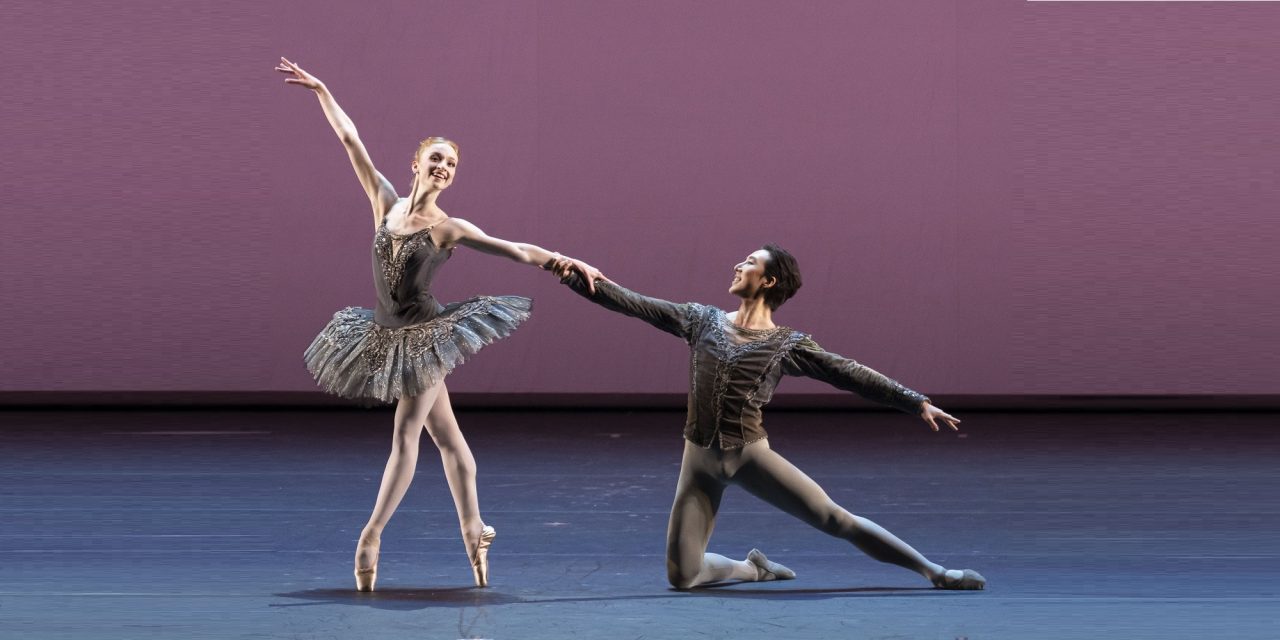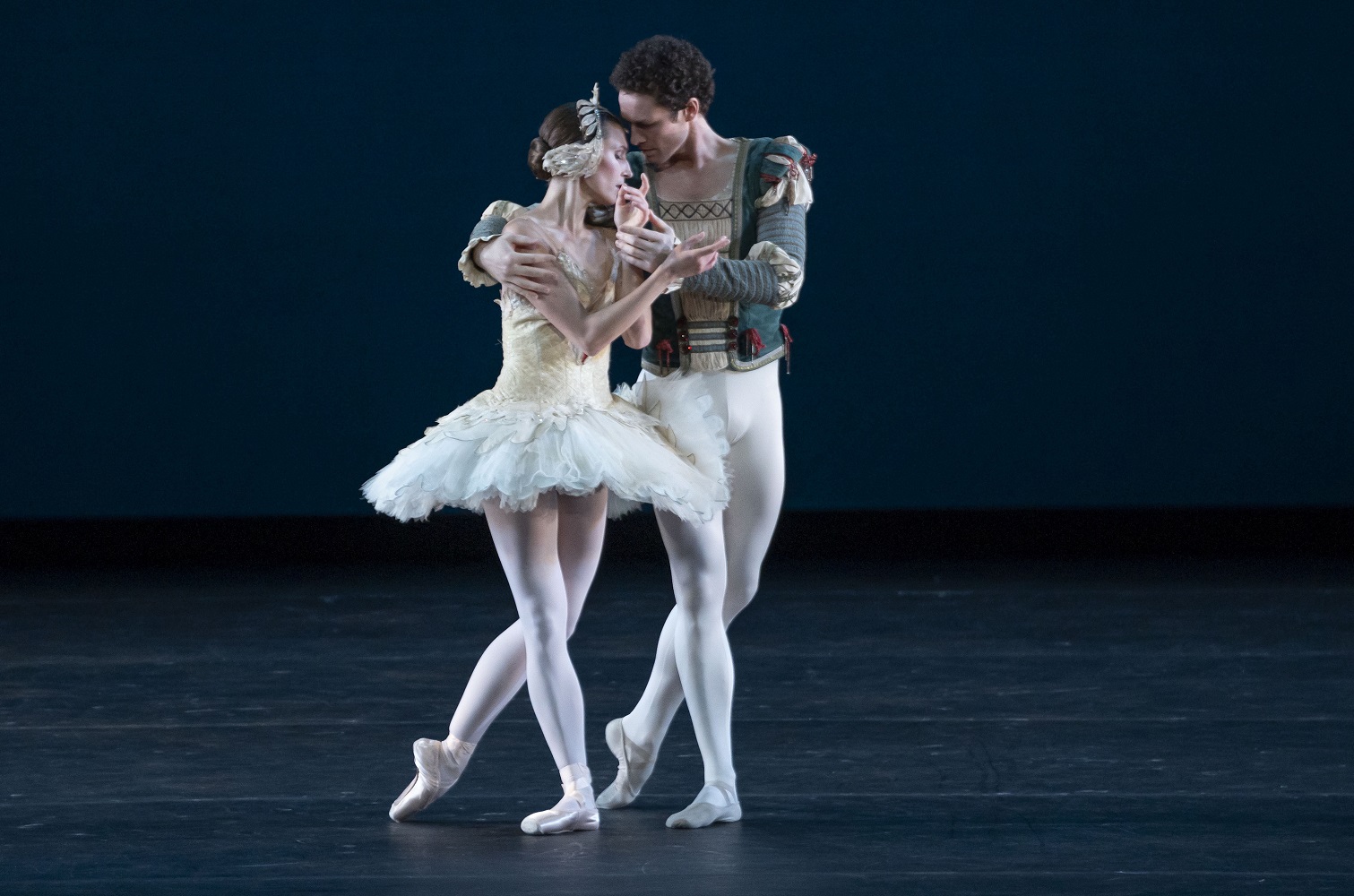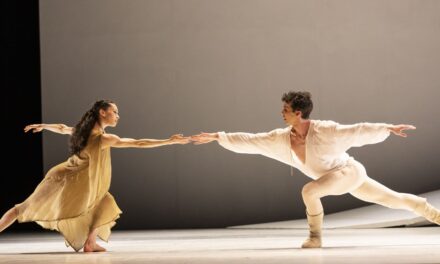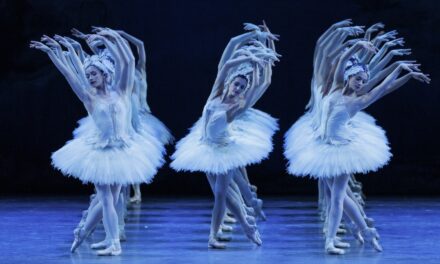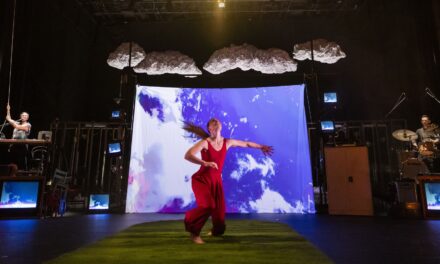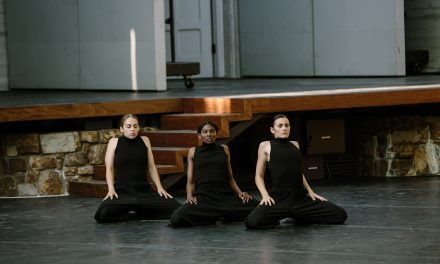On Sunday May 16th I watched American Ballet Theater’s “Uniting In Movement” presented by The Segerstrom Center For The Performing Arts now streaming online through May 26th. This production features the work of new and upcoming choreographers as well as stalwarts of the ballet world. The beautiful, young and technically proficient dancers, in the nascent stages of their careers, bring earnest commitment to each piece, all of it enjoyable if not completely successful.
The popular concerto “La Follia” by 17th century composer and violin virtuoso Francesco Geminiani sets a lively tone for choreographer, former principle New York City Ballet dancer, Lauren Lovette. I was lucky enough to have watched a rehearsal of this work in progress, which I wrote about for LADC with high hopes for what was to come. My overall impression of the completed performance was of clean, clear choreography being perfectly rendered and full of good but somewhat incomplete ideas. Though pleasurable, I would have liked to see Ms. Lovette take more chances, expound upon those good ideas and trust her instincts. I do appreciate that she acknowledged all aspects of the music, hitting the accents, finding the under tempos as well as the over-reaching themes, something that is often missed or misused. She also uses patterns well and her transitions from one segment to another were seamless and interesting. Ms. Lovette’s choreography comes from the classical world but more might be made of her occasional nod to humor and quirky movement as her career progresses. I must mention the lovely solo by the eye catching Chloe Misseldine as a particular highlight. Lighting by Brad Fields enhanced the action whereas the costumes by Victor Glemaud though appealing in design seemed to be an odd confusion of colors. The Geminiani score was artfully arranged by Michi Wiancko and performed by the East Coast Chamber Orchestra. The dancers were the excellent members of ABT, Kiely Groenewegen, Emily Hayes, Abbey Marrison, Johnathan Klein, Tyler Maloney, Joao Menegussi, Jose Sebastian and the aforementioned Chloe Misseldine.
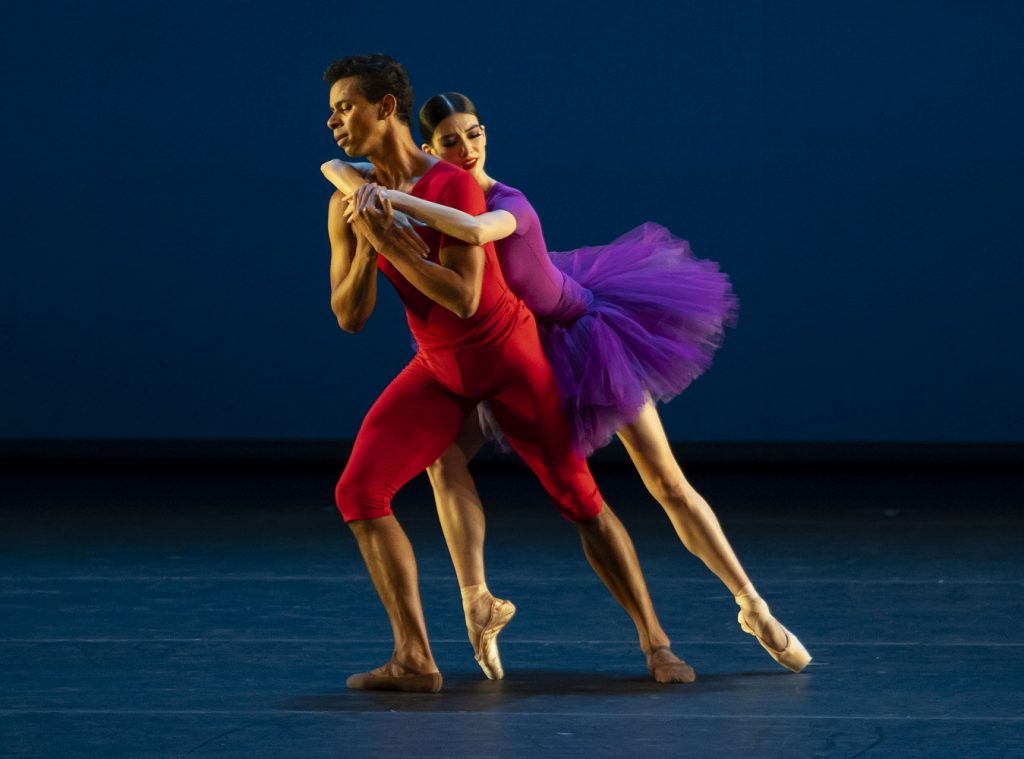
ABT Soloists Jose Sebastian and Chloe Misseldine in “La Follia Variations” choreography by Lauren Lovette – Photo by Todd Rosenberg
The first nostalgic strains of Tchaikovsky’s music for the Act II “Swan Lake” “Pas De Duex” hit me with an unexpected force. Not having seen this for a while I was prepared to ache with the beauty of the dance and be moved to tears. The music did not fail to bring these feelings to the fore however; the dancers brought technique and elegance but not much more. Ballerina Devon Teuscher is more than able to execute the choreography and does make an attempt to be passionate but it is not enough to elevate the role into something more. Her partner the Prince, Cory Stearns is left with little to do and because of this his stiffness and lack of passion was even more noticeable. The choreography based on the original by Lev Ivanov is old fashioned in some ways yet; it is perfect for the music and the intent of the scene. The dancers then, must also be actors and these two are limited in this realm. Technically they are more than capable, with that in hand they need to be directed as actors so that we might feel the rhapsody of this extraordinarily moving music and beautiful story. The apt costumes are by Zack Brown and the lighting is again by Brad Fields.
“ Grand Pas Classic” choreographed by Victor Gsovsky in 1949 set to music by Daniel-Francois Auber is a chestnut of the ballet lexicon. This is a Pas De Duex showcase for bravura performances by ballet stars. Ballerina Catherine Hurlin and partner Sung Woo Han are good dancers but lacked any sense of the abandon that is required. Hurlin was more successful as she has an engaging smile and brought some sense of joy to the stage. Han however, worked diligently but seemed insecure and though he is more than able, one had the sense that he was thinking too hard. Showing off is the intent here and in that way this piece did not really work. Lighting is by Brad Fields. No credit for costumes is given.
“Indestructible Light” choreographer Darrell Grand Moultrie’s new ballet has all the makings for a blast of outrageous sexiness and fun. With the music of Duke Ellington, Count Basie, Neal Hefti, and Billy Strayhorn, brave and exciting choices, how can you go wrong? One way is by not always paying enough attention to the music you’ve selected. Moultrie’s opening choreography cannot and does not address the densely layered Count Basie big band music led by a fast paced saxophone solo that leaves the dancers behind by a mile. They execute what is given to them very well and seem to be enjoying themselves but they are outdone by the music and this opening gambit leaves much to be desired. Part two however, driven by a cool upright bass fares much better as soloist Joseph Markey articulates the music with every inch of his body.
Duke Ellington allows jazz great Stephane Grappelli to lead the way with his whimsically compelling violin overlay in part three. This is the most inventive and the most theatrical segment with Moultrie’s choreography complimenting the music perfectly. The dancers stand flat against a red velvet wall and all movement emanates from this position. Using the wall as a backdrop the dancers exceptional line and technical training is shown to great advantage. This device gives Moultrie the opportunity to be innovative and he does not waste it.
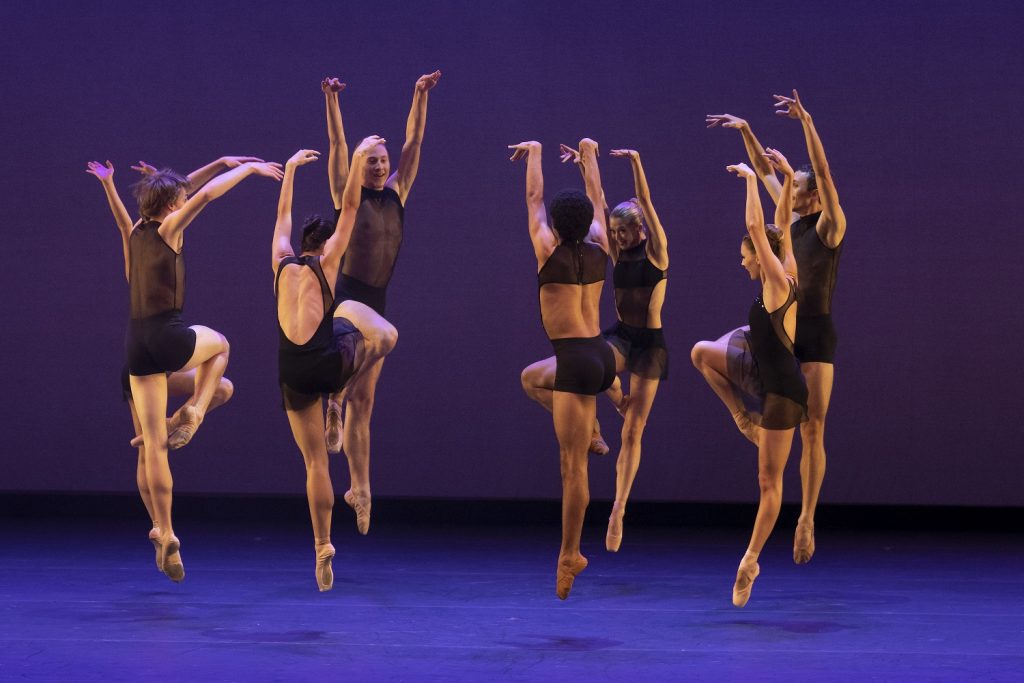
ABT dancers in “Indestructible Light” choreography by Darrell Grand Moultrie – Photo by Todd Rosenberg
Duke Ellington leads again with part four, a lovely adagio set to a sad refrain. Love and loss is the universal theme here. The dancers Betsy McBride and Jacob Clerico, bring their emotions to the stage and we feel their melancholy as they dance first alone then near each other and finally together with a series of beautiful lifts ending in an evocative back to back embrace. Heartfelt and unique in the use of the arms and the slow deliberate attention to detail makes this is a work of beauty.
Unfortunately the finale reverts to the same concept and missteps as the opening. The music a “battle of the bands” between Count Basie and Duke Ellington is fast and furious with crazy solos and wild rhythms. The choreography cannot keep up and often Moultrie resorts to the use of shaking hands, head nods and shimmies to try to make up for this lack. He is a gifted choreographer when all facets come together but must be more cognizant of the intricacies of the musical scores and be careful not to stray into the “cute or precious” when substance is required. The just right costumes are by Mark Eric and the lighting is again by the capable Brad Fields. The stellar cast also includes Scout Forsythe, Anabel Katsnelson, Hannah Marshall, Joseph Markey, Duncan Macilwane and an outstanding Melvin Lawovi who dances with pure joy.
Both Moultrie and Lovette bring something new and interesting to the table and it is with this in mind that I look forward to what they will do next. I also look forward to what the future holds for the young accomplished dancers of ABT. Dance is alive and well and as theaters reopen I anticipate that we will see a renaissance of exciting new work coming our way.
To purchase tickets for Uniting in Movement at The Segerstrom Center For The Performing Arts, please click HERE.
To visit the American Ballet Theatre website, please click HERE.
Written by Tam Warner for LA Dance Chronicle.
Featured image: ABT Soloists Catherine Hurlin and Sung Woo Han in “Grand Pas Classique” – Photo by Todd Rosenberg

